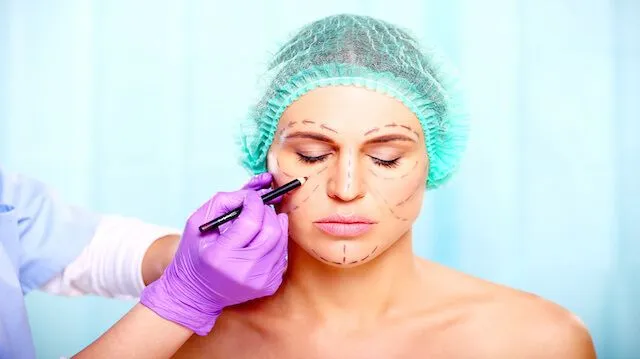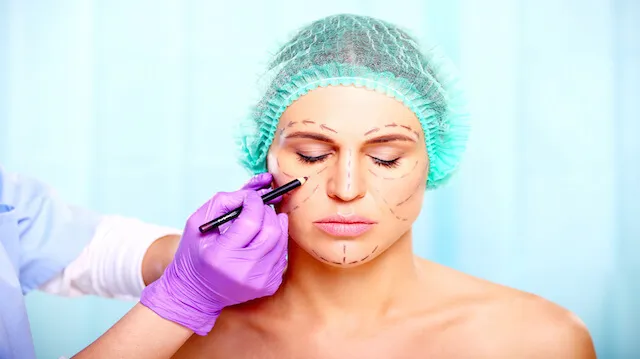
- Share on Facebook10
- Share on Pinterest
- Share on Twitter
Every day we’re bombarded with images of perfection that only Photoshop can guarantee. Facing such unrealistic expectations, many people resort to cosmetic surgery to achieve the perceived ideal. Because of the dangers associated with these surgeries — not to mention the underlying psychological aspect involved — cosmetic surgery can be more risky than many people know. The good news is there are several ways to fight aging naturally.
Hospitals can be dangerous
Cosmetic surgery involves a hospital stay, and while it’s sometimes necessary to seek treatment in a hospital setting, studies show that seeking an elective procedure may not be worth the risk that hospital stays carry. While the Centers for Disease Control (CDC) reports that fewer people are dying in hospitals these days, there are still a significant number of patients who fall victim to and die from septicemia, otherwise known as sepsis. It occurs when bacteria enter the body and leads to a toxic infection that sends patients into shock, causing many of the internal organs to shut down. However, the risk of death isn’t the only danger posed by hospital procedures.
Every medical procedure carries with it the chance of error, whether it’s a simple dosing mistake or an unnecessary operation. Most of us have heard horror stories of patients receiving a procedure on the wrong part of the body. One of the largest causes of medical errors come from interactions with inexperienced practitioners. Many experts recommend avoiding larger hospitals for procedures, including elective procedures. In fact, a study published in The Journal of General Internal Medicine found a significant spike in fatal errors at large teaching hospitals during the month of July when new medical residents begin their training. If you choose to undergo an elective procedure, experts agree that July is not the month to schedule it.
Regardless of the month, medical procedures also carry risks of infection and subsequent illness. Other risks include anything from nerve damage that can leave you with tingling or numbness at or near the surgical site, to deep vein thrombosis or a pulmonary embolism caused by blood clots forming in the deep veins of the body, resulting in stroke or death. Complications from anesthesia and blood loss are also very real risks from medical procedures.
Cosmetic surgery can be addictive
Cosmetic surgery hasn’t been around for very long, relatively speaking, so experts are just now beginning to look into the occurrence of cosmetic surgery addiction. It has been suggested that cosmetic surgery addiction is tied to body dysmorphic disorder (BDD), in which patients obsess over an unrealistic image of their bodies. Although it isn’t a recognized disorder at this time, cosmetic surgery addiction is a real problem.
 Doctors find that some people engage in a staggering number of cosmetic surgeries after their initial procedure, because they’re never truly happy with the results. A nip here and a tuck there don’t address an underlying psychological issue that is bringing a person to a cosmetic surgeon. If, for instance, the patient suffers from BDD or even mild depression, no amount of surgery will alleviate the root problem. The result is often a person who has undergone several procedures but is still unhappy.
Doctors find that some people engage in a staggering number of cosmetic surgeries after their initial procedure, because they’re never truly happy with the results. A nip here and a tuck there don’t address an underlying psychological issue that is bringing a person to a cosmetic surgeon. If, for instance, the patient suffers from BDD or even mild depression, no amount of surgery will alleviate the root problem. The result is often a person who has undergone several procedures but is still unhappy.
While some people have garnered a small amount of fame from their over-indulgence in cosmetic surgery — the “Human Barbie” for example — even just one procedure can leave a person looking a little “off.” There’s no guarantee that a person undergoing cosmetic surgery will like the results or will look natural after the healing process is complete. The good news is we all have the ability to fight aging naturally.
Diet and aging skin
One of the best ways to fight aging is to eat a low glycemic diet. A study from Dartmouth Medical School in Hanover, New Hampshire, concluded that sugar, particularly glucose and fructose, have a significant impact on aging skin. These sugars bond with proteins and fat in the skin to link collagen fibers. Linked fibers are not easily repaired, so advanced glycation end products, or “AGEs” result. “This process is accelerated in all body tissues when sugar is elevated and is further stimulated by ultraviolet light in the skin,” the study, published in Clinics in Dermatology, said. Being mindful of the amount of sun we expose ourselves to will also help us age gracefully.
Stay out of the sun
From skin cancer to early aging, the sun can wreak havoc on the delicate cells in our skin. The Department of Dermatology at Seoul National University College of Medicine found that infrared radiation from the sun exacerbates the effects of wrinkles caused by ultraviolet exposure. Many sunscreens do not protect us from infrared radiation, so limiting sun exposure is the best way to make sure wrinkles don’t get any extra help.
Antioxidants and aging
Antioxidants are beneficial to the body both inside and out. One such antioxidant, astaxanthin, has been hailed as nature’s most powerful antioxidant. A Japanese study published in the journal ACTA Biochimica Polonica, found that the application of astaxanthin to healthy subjects’ skin improved the appearance of crow’s feet and age spots, while adding elasticity and improving skin texture. Astaxanthin can also be taken as a supplement. Other antioxidants, such as those found in green tea, wine and berries help the body rebuild damaged tissues at the cellular level.
With minimally-invasive procedures and liposuction on the rise, it may seem like everyone is getting at least some work done. However, by taking care of our bodies and eating well, we can fight aging naturally, without visiting an operating room. What’s your favorite way to fight aging?
—The Alternative Daily
Sources:
http://www.cdc.gov/nchs/data/databriefs/db118.htm
http://www.nlm.nih.gov/medlineplus/ency/article/000666.htm
http://www.hope4ocd.com/downloads/gorbis_plastic0703.pdf
http://www.ncbi.nlm.nih.gov/pubmed/20620757
http://www.ncbi.nlm.nih.gov/pubmed/16118013
http://www.actabp.pl/pdf/1_2012/43.pdf
http://www.ncbi.nlm.nih.gov/pmc/articles/PMC2685276
http://www.plasticsurgery.org/Documents/news-resources/statistics/2014-statistics/plastic-surgery-statsitics-full-report.pdf
- Share on Facebook10
- Share on Pinterest
- Share on Twitter

